THROUGH THE BIENNIAL WHICH STARTED IN SEPTEMBER, ENDING ON NOVEMBER 1; NUMEROUS GALLERIES, MUSEUMS AND CULTURE CENTERS ALL OVER THE CITY HELD PARALLEL EVENTS BRINGING A QUITE LIVELY AUTUMN TO ISTANBUL. THE BIENNIAL IS WORTHY TO REMINISCE WITH THE VENUES “IT LEAKED INTO” AND THEIR STORIES.
14th Istanbul Biennial was “shaped by” Carolyn Christov-Bakargiev we know from dOCUMENTA under the title of SALTWATER: A Theory of Thought Forms).
In the conceptual framework, Bakargiev speaks about the exhibition as:
“It looks for where to draw the line, to withdraw, to draw upon, and to draw out. It does so offshore, on the flat surfaces with our fingertips, but also in the depths, underwater, before the enfolded encoding unfolds.
This city-wide exhibition on the Bosphorus considers different frequencies and patterns of waves, the currents and densities of water both visible and invisible that poetically and politically shape and transform the world. With and through art, we mourn, commemorate, denounce, try to heal, and we commit ourselves to the possibility of joy and vitality, of many communities that have co-inhabited these spaces, leaping from form to flourishing life.”
Through the biennial, more than 1,500 works of eighty-two artists were installed on thirty-six locations spread over the city. Saltwater leaking onto the Islands, the city from the north of Bosphorus set out with the purpose of using all dynamics of the town transforming the city itself into a tool of display. In addition to the multi-participant exhibitions in Istanbul Modern, Galata Greek Primary School, ARTER and Private Italian High School, the biennial was a guest at different locations from different times of the city with speeches and associations. As Bakargiev says:
“When you visit the 14th Istanbul Biennial, you will spend quite a bit of time on salt water. There is a slowing down of the experience of art due to the travel between venues, especially on ferries. This is very healthy: salt water helps to heal respiratory problems and many other illnesses, as well as calming the nerves.
SALTWATER takes place in museums and also in temporary spaces of habitation on land and on sea, such as boats, hotel rooms, former banks, garages, gardens, schools, shops and private homes. Although the journey is continuous, the exhibition spans six main areas: the Northern Bosphorus, Beyoğlu, Şişli, the Old City, Kadıköy and the Princes’ Islands. Each might correspond to a day in your lives.”
The Biennial is worthy to reminisce with the venues “it leaked into” and their stories.
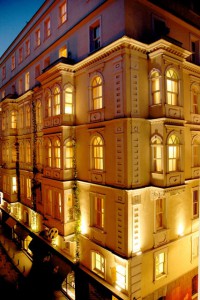
ADAHAN HOTEL:The ADAHAN Hotel opened in 2013, in what was formerly the residence of the Camondo family, who ran one of the earliest and largest banks in the Ottoman Empire, established in 1815. The building was designed by Stampa Brothers and Antoine Tedeschi in 1874. Room 104/B is a venue of the biennial.

ADAHAN CISTERN:Located in the former Camondo House, beneath the building that houses the ADAHAN Hotel a cistern dates back centuries.
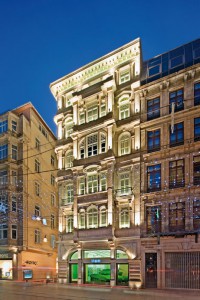
ARTER:The building, originally Meymaret Han, is situated on Istiklal Avenue. It is thought to have been constructed in the 1910s by Petraki Meymaridis Efendi, one of the architects of Beyoğlu. The building opened as “ARTER – space for art”, after a renovation by Fahrettin Ayanlar for the Vehbi Koç Foundation.

BÜYÜKADA PUBLIC LIBRARY:Büyükada Public Library on Büyükada was a private home until it was renovated and opened in 2006 as a library for the island.

CASA GARIBALDI:The Società Operaia Italiana building, informally called Casa Garibaldi, was constructed in 1884–1885 by architect Bernardo Bottarlini. Giuseppe Garibaldi, the Italian revolutionary and politician, lived in Istanbul from 1828 to 1831.

CEZAYIR: Another nearby building in Galatasaray neighbourhood from 1901, Cezayir hosts the public programme throughout the biennial, as well as one artist’s project.
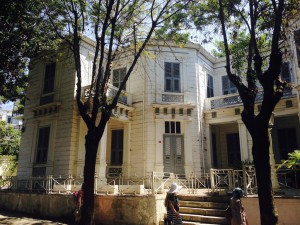
ÇANKAYA 57: This twin house was built in 1907–1908 by an Armenian tradesman for his two daughters. It is legend that Trotsky sojourned in this house for a couple of weeks during his stay on the island. More recently, the journalist Ahmet Emin Yalman lived there and the house was used as a location for a Turkish soap opera “Dudaktan Kalbe”.

DEPO: Constructed in the 1920s, the building presents floral plaster casts on its façade and was used as a tobacco warehouse for the Kavala family until the 1950s. In 2005, it was converted into an exhibition space when it hosted the Istanbul Biennial for the first time. In 2009, it became the home of the vibrant cultural centre DEPO.

FRANSIZ YETIMHANESI: The Palace of St. Eugène was built as an orphanage in 1868, and it became the atelier of an Armenian plaster caster Garabet Cezayirliyan in the mid-twentieth century. The property is contested and it is currently home to a workshop and archive of Art Nouveau moulds.

GALATA RUM İLKÖĞRETIM OKULU :The Galata Greek Primary School on Kemeraltı Street near the Bosphorus was built between 1885 and 1909 in a Neo-classical architectural style for the education of Greek children in Istanbul. Due to the decrease of the Greek population from the 1960s onwards, the school closed in 1988 and then again in 2007.

The Pangaltı Anarad Hığutyun Girls’ School opened in 1903 and belonged to the Armenian Foundation of Istanbul. In 2004, the school closed due to decline in the numbers of students. It became the headquarters of Hrant Dink Foundation and Agos in 2015, after two year renovation.
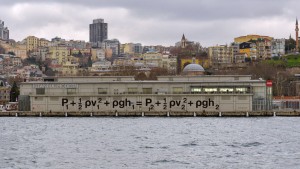
İSTANBUL MODERN: Built by the architect Sedad Hakkı Eldem in the scope of an urban revitalisation project between 1957 and 1958, Antrepo No. 4 is a former cargo warehouse on the Bosphorus. It was designed as a part of a larger Galata pier complex by the Turkish Maritime Organisation. In 2003, the 8,000 square-meter warehouse was transformed into a contemporary museum building and opened to the public in 2004. The pier continues to serve as Istanbul’s main port. The façade facing the Bosphorus as well as the ground floor are venues.
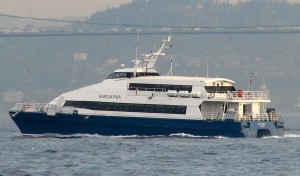
KAPTAN PAŞA DENIZ OTOBÜSÜ: Built in 1997, this hydrofoil is be docked at the IDO pier on Büyükada island and serves as one of the venues of the biennial.

KASA GALERI: Minerva Han is a landmark historical building that was constructed as the Bank of Athens in 1913 by architect Vasileios Kouremenos in an Art Nouveau style. It was later acquired by Deutsche Bank in the 1930s and more recently has become a part of Sabancı University. The former bank vault in the building was converted to an exhibition space called “Kasa Galeri”.

KÜÇÜK MUSTAFA PAŞA HAMAMI: One of the oldest buildings of the Islamic period in İstanbul, Küçük Mustafa Paşa Hammam was built in 1477 during the reign of Fatih Sultan Mehmet, 24 years after the conquest of Constantinople by the Ottomans. Located at Müstantik Caddesi No: 23-35, it is a short walk from the South coast of the Golden Horn.

THE MUSEUM OF INNOCENCE: The Brukner Apartment on Dalgıç Street was originally constructed three years after the earthquake of 1894. Renovated between 2000 and 2003 by architect İhsan Bilgin for Orhan Pamuk, it became the Museum of Innocence in 2012.

MIZZI MANSION: Commissioned by George Mizzi in the late nineteenth century as a private residence, Mizzi Mansion, also known as the Red Palace, was used as the Hotel San Remo between 1930 and 1940. The red pressed brick façade, and the monumental corner tower were designed by Italian architect Raimondo D’Aronco in 1894.

PERA MUSEUM: Pera Museum was founded in 2005 by Suna and İnan Kıraç Foundation as an exhibition space and a collection of paintings, weights and ceramics. It is located in the former Bristol Hotel designed in 1893 by architect Achille Manoussos.
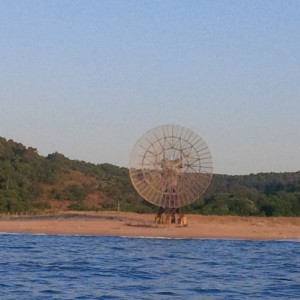
RIVA BEACH: Riva Beach is located in a military zone on the Asian side of the Bosphorus looking towards the Black Sea. A radar antenna remains here from the Cold War period.

RIZZO PALACE: Built in the nineteenth century, this typical wooden house is named after its first owner, Stefan Rizzo. It was a private residence until 1961, when it was acquired by the Balıklı Greek Hospital Foundation and served as a pension until 2010.

RUMELIFENERI: Rumelifeneri is a coastal village near the Northwestern end of the Bosphorus Strait just before it opens up onto the Black Sea. It is said that Jason and the Argonauts passed through this location in their search for the Golden Fleece. Today’s lighthouse was built in 1855 during the Crimean War.

SALT GALATA: SALT Galata is a research centre and exhibition space that opened in 2011. The building, former headquarters of the Ottoman Bank, was designed in 1892 by French Levantine architect Alexandre Vallaury. It is located on Bankalar Street, where various other banks were built in the same period.
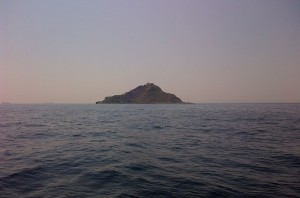
SIVRIADA: Here are the coordinates of this small island in the Marmara Sea: 40.875516, 28.971035. Many dogs died there in 1910.

SPLENDID PALAS OTELI: In 1908, Sakızlı Kazım Paşa commissioned architect Kaludi Laskaris Kalfa to build this hotel on the site of the former Hotel Giacomo. The Hotel opened in 1911. It is inspired by an Art Nouveau style, and displays a synthesis of Eastern and Western design.

THE HOUSE HOTEL GALATASARAY: Originally commissioned by the Zenovitch family, this 1880 building was designed by a Serbian architect and transformed into a hotel in April 2010. The building reflects the floral stone masonry developed in Istanbul after the great fire of 1870, which destroyed many wooden buildings in the area. Room 2 is a biennial venue.

TROTSKY HOUSE:The Yanaros Mansion, gardens and pier were built in the 1850s by Nikola Demades on the Western side of Büyükada. Leon Trotsky lived here between 1932 and 1933 at the end of his four-year exile on the island.

THE HOUSE HOTEL: The historical headquarters of Crédit Général Ottoman were built on Bankalar Street in 1863 by Istanbul-born Italian architect Antoine Tedeschi in a neo-Renaissance style. Subsequently the building housed the Deutsche Bank and Sümerbank before turning into a hotel in 2014. Room 211 is a venue.












